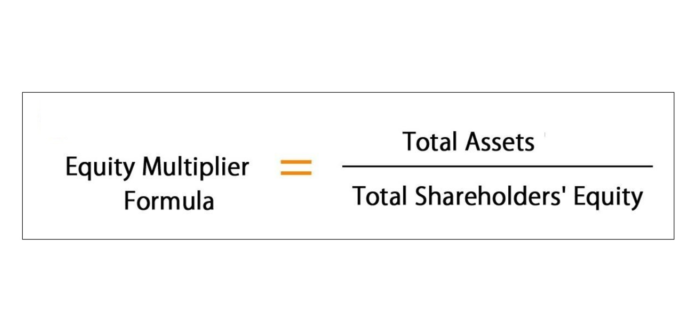
On the other hand, vertical analysis involves comparing different line items within a single period, typically a single year, to determine their relative proportions and significance. It helps to understand the composition of financial statements by expressing each line item as a percentage of a base figure, such as total revenue or total assets. While horizontal analysis focuses on changes over time, vertical analysis emphasizes the relative importance of different line items within a single period. Bookstime Both methods provide valuable insights into a company’s financial performance and can be used together to gain a comprehensive understanding of its financial health. Horizontal analysis and vertical analysis are two valuable techniques used in financial statement analysis.
- Trend analysis and horizontal analysis are two commonly used financial analysis techniques, often used interchangeably or mistakenly identified as the same.
- Gross margin is a vital metric for businesses, showing how much money is left after covering the cost of goods sold.
- Building on the previous income statement example, the 100% increase in operating income quantifies excellent business performance.
- It would make more sense to compare the values for a specific quarter to the same quarter from past years.
- For example, a statement that says revenues have increased by 10% this past quarter is based on horizontal analysis.
- Horizontal analysis is a financial review of a company’s performance over a set number of accounting periods.
Select Time Periods
- Conversely, if expenses have been steadily increasing while revenues remain stagnant, it may signal potential inefficiencies or cost management issues.
- When the same accounting standards are used over the years, the financial statements of the company are easier to compare and trends are easily analyzed.
- On the other hand, horizontal analysis looks at amounts from the financial statements over a horizon of many years.
- Horizontal analysis is used in financial statement analysis to compare historical data, such as ratios, or line items, over a number of accounting periods.
- A financial professional will offer guidance based on the information provided and offer a no-obligation call to better understand your situation.
- In this way, percentage changes are better for comparative purposes with other firms than are actual dollar changes.
- The investor now needs to make a decision based on their analysis of the figures, as well as a comparison to other similar figures.
Based on historical data, a horizontal analysis interprets the change in financial statements over two or more accounting periods. It denotes the percentage change in the same line item of the next accounting period compared to the value of the baseline accounting period. These formulas can be applied to various financial statement items, including revenue, expenses, net income, assets, liabilities, and equity. By systematically calculating the absolute and percentage changes, analysts can derive meaningful insights into the financial trends and performance of a company over time.

What Is the Difference Between Horizontal Analysis and Vertical Analysis?

Comparability means that a company’s financial statements can be compared to those of another company in the same industry. We can see the share of fixed assets increased while current assets declined as a percentage of total assets. Choosing appropriate base amounts and comparing vertical analysis percentages over time lets you analyze changes in the financial structure and performance of a company. Once the base year has been determined, you can calculate the which of these are the same as horizontal analysis? net dollar change for each line item on the financial statements by subtracting the base year amount from subsequent years.
- When Financial Statements are released, it is important to compare numbers from different periods in order to spot trends and changes over time.
- Operating and administrative expenses also increased slightly and interest expense increased by over 12%.
- Through horizontal analysis, we can observe that while the absolute increase in net income remained the same ($20,000), the rate of growth slowed down in the third year compared to the second year.
- The identification of trends and patterns is driven by asking specific, guided questions.
- In the latter, the numbers in a succeeding period are expressed as a percentage of a predetermined baseline year.
- Horizontal analysis helps spot patterns and growth trends, while vertical analysis allows financial statement items to be compared to each other or to a benchmark figure.
Deciding When to Use Horizontal vs. Vertical Analysis
This can be helpful in making decisions about whether to invest in a company or not. Horizontal analysis involves looking at Financial Statements over time in order to spot trends and changes. This can be useful in identifying areas of concern for a business, as well as improving the performance of companies that are struggling. In this case, if management compares direct sales between 2007 and 2006 (the base year), it is clear that there is an increase of 3.2%. Different ratios, such as earnings per share (EPS) or current ratio, are also compared for different accounting periods. Horizontal analysis is valuable because analysts assess past performance along with the company’s current financial position or growth.
- Horizontal and vertical analysis are two important methods used to analyze financial statements.
- Select the base and comparison periods and the values for your chosen variable, then calculate the percentage change between them.
- It is important for businesses to understand the attributes and benefits of each analysis method and choose the most appropriate approach based on their specific needs and objectives.
- When it comes to analyzing financial statements, businesses have various tools at their disposal.
- To understand what has been affecting a company’s financial performance over a period of years, investors and analysts can use horizontal analysis to detect trends and growth patterns.
- It helps to understand the composition of financial statements by expressing each line item as a percentage of a base figure, such as total revenue or total assets.
Comparison
Selecting the base year and comparative year is the first step in computing the percentage change. Then, divide the result by the base year to arrive at the dollar change by deducting the value from the base year from the comparative normal balance year. As noted earlier, these should span multiple reporting periods to provide a meaningful analysis. Another problem with horizontal analysis is that some companies change the way they present information in their financial statements. This can create difficulties in detecting troublesome areas, making it hard to spot changes in trends. The horizontal method of analysis is used to identify changes in financial statements over time and assess those changes.



